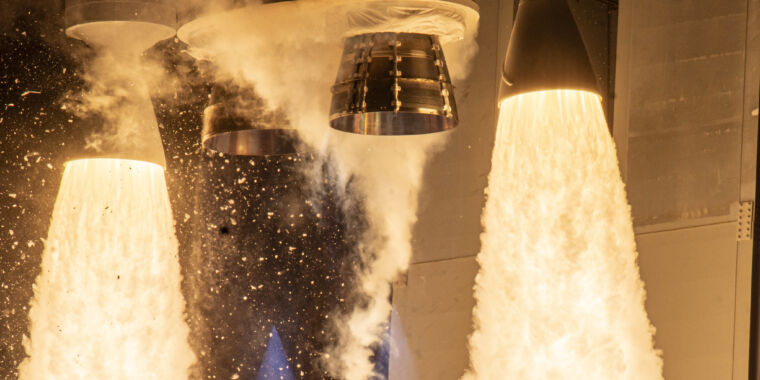United Launch Alliance’s Vulcan Rocket Development
It has been approximately four years since the US Air Force made strategic selections for companies to carry out military payload launches during the mid-2020s. United Launch Alliance was one of the companies chosen, with its Vulcan rocket assigned to handle 60 percent of these missions. SpaceX was the other company selected, responsible for the remaining 40 percent of launches utilizing the Falcon 9 and Falcon Heavy boosters.
Despite the large Vulcan rocket still being under development at the time of selection, it was anticipated to take flight within a year from then. An Air Force official expressed confidence in Vulcan’s readiness, stating that the military believed the rocket would be prepared for flight soon. United Launch Alliance’s motivation for creating the Vulcan rocket was to eliminate reliance on RD-180 engines produced in Russia and currently used in its Atlas V rocket.
William Roper, the assistant secretary of the Air Force for acquisition, technology, and logistics at the time, stated, “I am very confident with the selection that we have made today. We have a very low-risk path to get off the RD-180 engines.” The announcement also revealed the first two missions scheduled to fly on the Vulcan rocket: the USSF-51 mission set for launch in the first quarter of 2022 and the USSF-106 mission intended for the third quarter of 2022.
Challenges and Setbacks
Contrary to expectations, the development of the Vulcan rocket faced significant delays. Its debut was pushed beyond the anticipated timelines of 2020 and 2021, finally lifting off in January of this year. Despite the successful maiden flight, United Launch Alliance is required to complete another flight before the US military certifies Vulcan for its payload deliveries.
These delays ultimately led to the reassignment of the USSF-51 mission from Vulcan to an Atlas V rocket. The USSF-51 launch is now scheduled for next month. On the other hand, the USSF-106 mission, the initial national security mission designated for Vulcan, remains tethered to the rocket, but its launch date remains uncertain.
Over the years, there have been growing concerns among Air Force and Space Force officials regarding the delays encountered by United Launch Alliance and Blue Origin, the manufacturer of BE-4 rocket engines that power Vulcan’s first stage. These concerns were largely internal until recently when a letter from Air Force Assistant Secretary Frank Calvelli to Boeing and Lockheed Martin, the co-owners of United Launch Alliance, surfaced.
Overcoming Manufacturing and Launch Challenges
In the letter dated May 10th, Calvelli expressed concerns about United Launch Alliance’s ability to scale manufacturing of the Vulcan rocket and increase launch frequency to meet military requirements effectively. Calvelli highlighted the existing military satellite capabilities grounded due to Vulcan delays and the backlog of 25 National Security Space Launch (NSSL) Phase 2 Vulcan launches assigned for completion by the end of 2027.
Calvelli urged Boeing and Lockheed to conduct an independent review to evaluate United Launch Alliance’s production scalability and its commitment fulfillment towards the military. Besides military obligations, Vulcan also has significant satellite launch commitments, such as the agreement with Amazon for Project Kuiper satellite deployments.
Despite these challenges, United Launch Alliance remains focused on advancing the Vulcan rocket program. The company’s ambitious goal aims to achieve a cadence of two Vulcan launches monthly by the conclusion of 2025, contrasting with an average of fewer than six launches annually over the past five years. These expectations have raised concerns regarding the feasibility of such a rapid escalation in launch frequency.
In conclusion, United Launch Alliance is under increasing pressure to demonstrate manufacturing scalability, meet mission timelines, and maintain a competitive edge in the space launch industry. The future success of the Vulcan rocket lies in overcoming these challenges and establishing a reliable launch cadence to fulfill the demands of both military and commercial satellite deployment.
Image/Photo credit: source url





